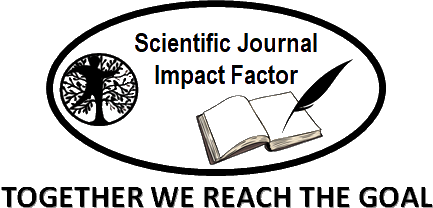|
|
The Editorial Staff who decide to use of this option will receive the SJIF Value within 7 days.
Register journal - (Free Service)
in a scored and prestigious database of scientific journals.
Manage journal - (Free Service)
This section allows you to place information about the journal, editors, and publisher, etc.
Full list of journals from database of SJIFactor.com. It contains currently over 25000 journals from all over the world.
A proof of being indexed in SJIF Journal Rank List.
|
|
International Journal of Phytopharmacy
|
SJIF 2025:
Under evaluation
Area: Multidisciplinary
Evaluated version: online
|
Previous evaluation SJIF
2024: Not indexed
2023: 6.018
2022: 6.029
2021: 6.048
|
|
The journal is indexed in:
|
|
SJIFactor.com
|
|
Basic information
|
|
|
Main title
|
International Journal of Phytopharmacy
|
|
Other title [English]
|
International Journal of Phytopharmacy
|
|
Abbreviated title
|
Int J Phytopharm
|
|
ISSN
|
2277-2928 (E) |
|
URL
|
http://ssjournals.com/index.php/ijpp
|
|
Country
|
 India India
|
|
Frequency
|
Bimonthly |
|
License
|
Free for educational use
|
|
Texts availability
|
Free
|
|
Contact Details
|
|
|
Editor-in-chief
|
Dr. Manoj S. C
|
|
|
Government College of Pharmacy, Kathora Naka, Amrawati-444604 Maharashtra
|
|
|
 India India
|
|
Publisher
|
Scholar Science Journals
|
|
|
120, Swagat Nagar, New Narsala Road, Nagpur, India
|
|
Journal's description
|
|
International Journal of Phytopharmacy (IJPP)(ISSN 2277-2928) is a bi monthly (6 issues per year) international journal publishing the finest peer-reviewed research in the field of Pharmacy Research on the basis of its originality, importance, disciplinary interest, discussions and conclusions and serves as a means for scientific information exchange in the international pharmaceutical forum.
Some specific areas that are appriciated include the following:
Herbal drugs, their extraction and the standardization and quality control studies, Phytomedicine and phytopharmacy may involve the various activities like isolation of various phytoconstituents from herbs and use of the same in various herbal formulations. The isolated phytoconstituents analysed by various instrumental techniques like UV Spectrophotometer, FTIR, NMR, GC-MS, LCMS, AAS, etc., to elucidate the structure. Phytomedicine and phytopharmacy relates the various research areas in biochemistry, molecular biology, plant physiology, pharmacology and genetics.
Folk and modern uses of plants. Herbal commercial products. The complexity of herbal medicines: control, conservation, standardization, consumer informations. Phytotherapy. Main complementary/alternative medicines using plant materials.
Medicinal plants as drugs. Biologically active compounds with applications in medicine. Phenolic compounds: simple phenols and phenolic acids, coumarins, lignans, flavonoids, tannins, polyketides. Terpenoids and steroids: monoterpenes, sesquiterpenes, iridoids, sesquiterpenoids lactones, diterpenes, triterpenes, tetraterpenes. Alkaloids. Polysaccharides, cyanogenic glycosides, glucosinolates, lectins, enzymes. Emerging plants used in high value products including functional foods, nutraceuticals, pharmacologicals, and fragrances.
|
|
|



 India
India
